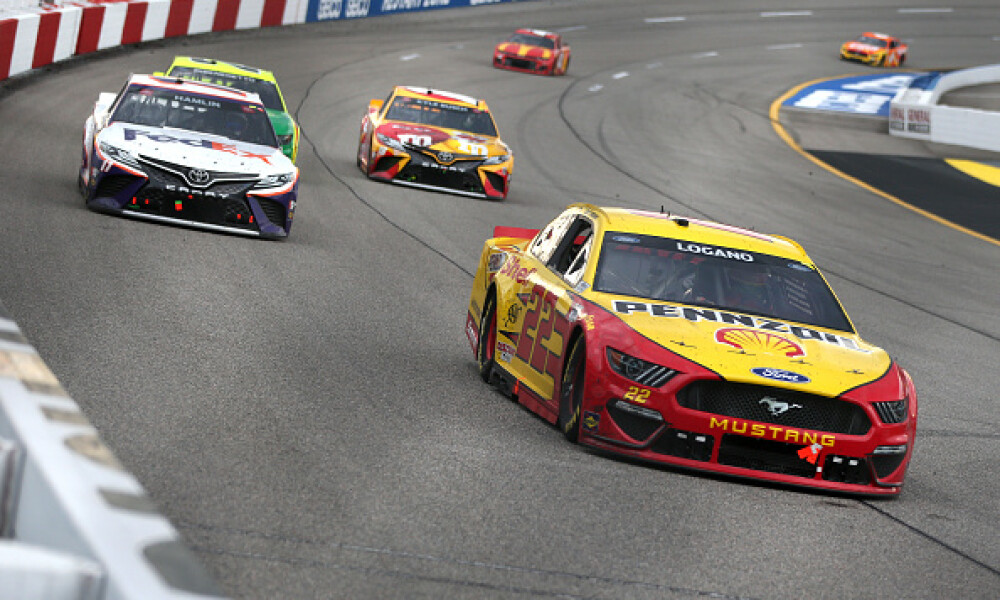Toyota Owners 400 NASCAR DFS Track Breakdown

Published: Apr 02, 2022
The seventh race of the NASCAR Cup series is the Toyota Owners 400 at Richmond Raceway. It’s also the first short track of the year, well true short track. We approached Phoenix a few weeks back with a similar DFS strategy to short tracks, now we get an actual short track for the race.
Richmond Raceway is known as the “Action Track” but it hasn’t seen a ton of action in the last several races to be honest. The racing here is based on track position quite a bit. That’s not that different from any other short track really, but passing is certainly tougher here. How tough? Well 68-percent of the top-10 finishers in the last five races here have started inside the top-12. That’s an awfully high number and one of the higher numbers of any track on the schedule. The main way to pick up spots here is to use pit strategy to jump the line so to speak, just ask Alex Bowman about it. Richmond is a 0.75-mile track that’s relatively flat in terms of banking with a curved front stretch that makes it more of a D-shaped track. The Toyota Owners 400 is the first of two races at Richmond so teams will be looking to gain as much of a notebook here as possible this weekend.
DFS Strategy
The strategy that we’re using this week is one predicated on finish position. Laps Led is a big factor here to be sure, but with two drivers generally leading more than half the laps if not three-quarters of them, finish position will be a big base. We already mentioned that starting toward the front is a very good way of finishing near the front, but it’s also a good way to lead laps. Most of the laps led leaders have started inside the top-five here over the last five races. As for how passing goes here, it’s tough. Over the last five races, there’s an average of less than five drivers in the field a race to move up 10 or more spots. There are also only 7.5 drivers a race that move up six or more spots as well. Why is it so small of a number? Well, it’s tough to stay on the lead lap at Richmond as well. Over the last five races here, there have been a max of 16 drivers to finish on the lead laps. That reduces some of the positional differential upside. Qualifying is going to be important on Saturday but we also need to pay attention to long-run speeds at practice. They’ll be able to run 10-15 laps at a time without much of an issue given how short the laps are.
Richmond Track Facts To Know
- There are only five drivers in the field with at least four top-10 finishes in the last five races here.
- Six drivers have an average Driver Rating over 100 in the last five races.
- On DraftKings there are only four starting spots past 15th in the grid to average over the average points scored by all of the starting spots.
- On FanDuel there are only six starting spots past 15th in the grid to average over the average points scored by all of the starting spots.
- Seven drivers average a finish better than 10.0 over the last five races here.
Last Five Richmond Race Stats
The table below shows the number of drivers to reach each stat-type over the last five Richmond Raceway races with Race 1 being the most recent.
| Race | Race | Race | Race | Race | ||
| 1 | 2 | 3 | 4 | 5 | AVG | |
| Positive Place Differential | 17 | 17 | 17 | 15 | 14 | 16 |
| Six+ Place Differential Spots | 8 | 8 | 6 | 7 | 9 | 7.6 |
| Double-Digit Place Differential | 4 | 6 | 3 | 4 | 7 | 4.8 |
| Double-Digit Fast Laps | 9 | 11 | 11 | 12 | 11 | 10.8 |
| 20+ Laps Led | 4 | 4 | 5 | 3 | 5 | 4.2 |
| 50+ Laps Led | 3 | 2 | 2 | 3 | 3 | 2.6 |
| 100+ Laps Led | 1 | 2 | 1 | 2 | 2 | 1.6 |
| Lead Lap Finishers | 9 | 14 | 11 | 13 | 16 | 12.6 |
For the tables below:
The DFS Scoring Table: Race 1 is the most recent race in the sample size with Race 5 being the earliest. We are using the Last 5 Richmond races for the data.
The Similar Races table: The data is comprised of stats from the last 10 races across Richmond, Phoenix, and New Hampshire.
The Weekly Track Stats Table: The stats are based on every race at Richmond Raceway since 2012 based on starting spot regardless of the driver in that starting spot.
